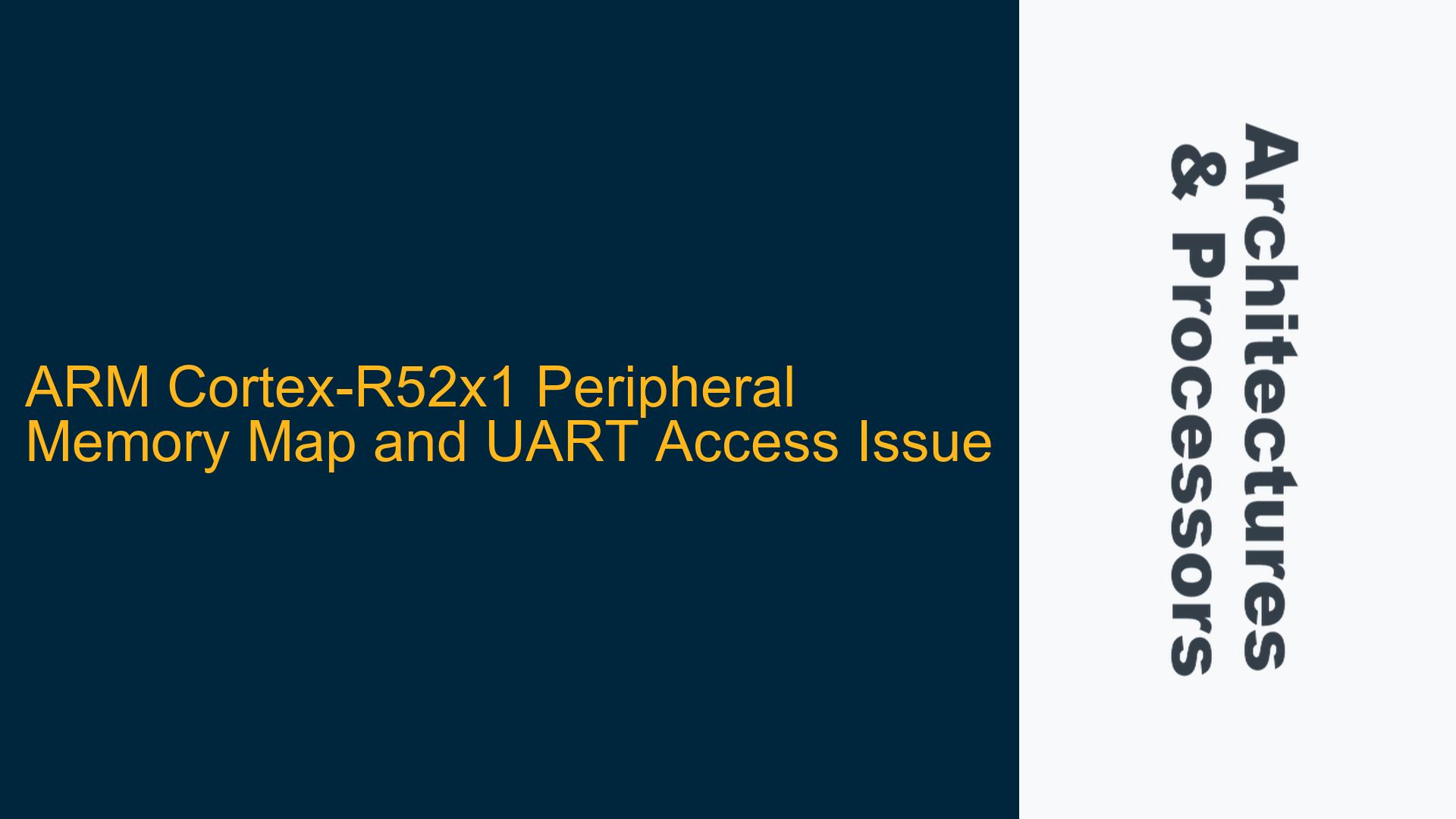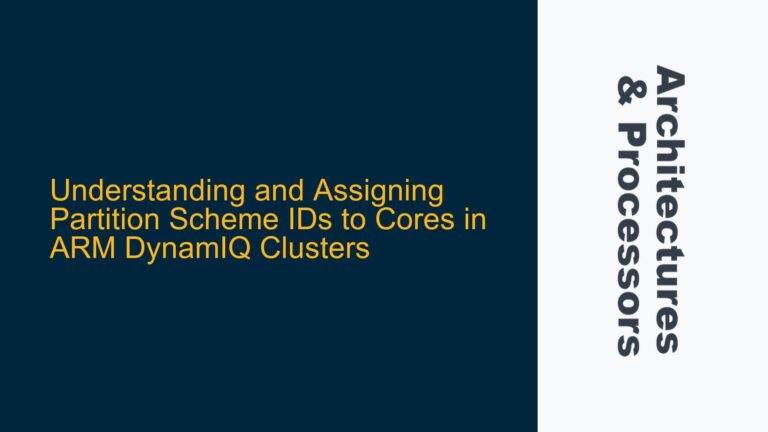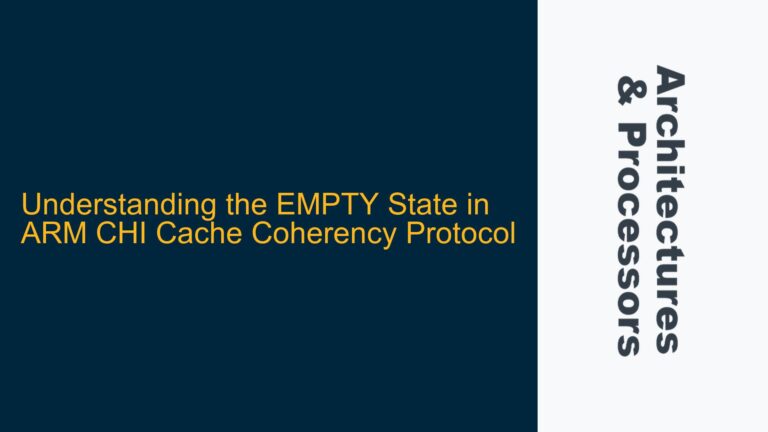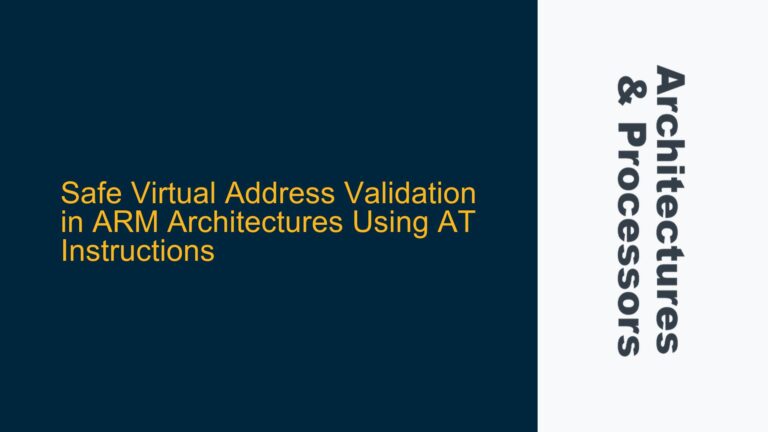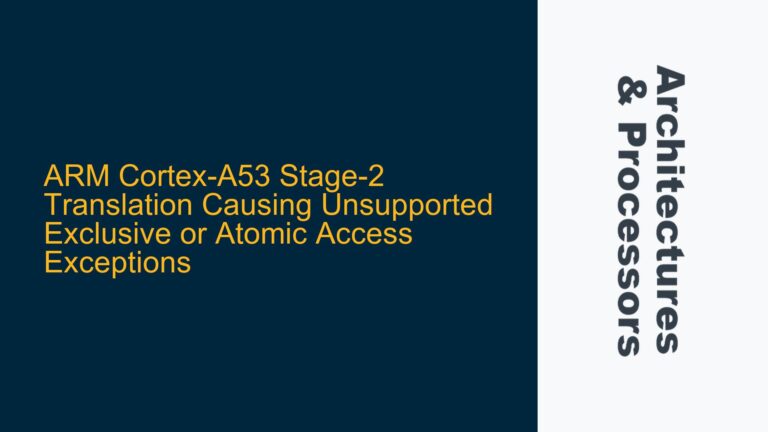ARM Cortex-R52x1 PL011 UART0 Access Causing Data Abort Exception
The issue at hand involves accessing the PL011 UART0 peripheral on the ARM Cortex-R52x1 processor, which results in a Data Abort exception. This problem arises when attempting to access the UART0 peripheral at the base address 0xB0090000, as specified in the Fast Models Reference Manual Version 11.4.2. However, the address 0x1C090000, which is commonly used for A-series processors, maps to DRAM in the FVP_BaseR_Cortex-R52x1 model. This discrepancy suggests a potential misalignment between the expected peripheral memory map and the actual memory map implemented in the FVP_BaseR_Cortex-R52x1 model.
The Data Abort exception indicates that the processor is attempting to access an invalid memory location, which could be due to several reasons, including incorrect memory mapping, misconfigured memory management units (MMUs), or issues with the translation tables. Given that the code successfully boots from EL2 and enters EL1, the problem is likely localized to the peripheral memory access rather than a broader system initialization issue.
Understanding the memory map of the Cortex-R52x1 is crucial for resolving this issue. The Cortex-R52x1 is a high-performance processor designed for real-time applications, and its memory map is typically divided into several regions, including DRAM, peripherals, and system control registers. The PL011 UART0 peripheral is a common communication interface used for debugging and output, and its correct configuration is essential for system functionality.
Incorrect Peripheral Base Address and MMU Configuration
One of the primary causes of the Data Abort exception when accessing the PL011 UART0 peripheral is an incorrect base address. The Fast Models Reference Manual specifies the base address as 0xB0090000, but this address might not be correctly mapped in the FVP_BaseR_Cortex-R52x1 model. This discrepancy could be due to differences in the memory map between the Fast Models Reference Manual and the actual implementation in the FVP_BaseR_Cortex-R52x1 model.
Another potential cause is the misconfiguration of the Memory Management Unit (MMU). The MMU is responsible for translating virtual addresses to physical addresses, and if the translation tables are not correctly set up, the processor might attempt to access an invalid physical address, resulting in a Data Abort exception. The Cortex-R52x1 supports multiple exception levels (ELs), and the MMU configuration at each EL must be carefully managed to ensure proper memory access.
Additionally, the Cortex-R52x1 implements a memory protection unit (MPU) that can restrict access to certain memory regions. If the MPU is not correctly configured, it could prevent access to the PL011 UART0 peripheral, leading to a Data Abort exception. The MPU configuration must align with the memory map and the access permissions required for the UART peripheral.
The Cortex-R52x1 also supports cache coherency and memory barriers, which can affect peripheral access. If the cache is not properly invalidated or flushed before accessing the UART peripheral, it could lead to inconsistent data and potential access violations. The use of memory barriers is essential to ensure that memory operations are performed in the correct order, especially when dealing with peripherals that have strict timing requirements.
Verifying and Correcting the Peripheral Memory Map and MMU Configuration
To resolve the Data Abort exception when accessing the PL011 UART0 peripheral on the Cortex-R52x1, the following steps should be taken:
First, verify the correct base address for the PL011 UART0 peripheral in the FVP_BaseR_Cortex-R52x1 model. This can be done by consulting the latest documentation for the FVP_BaseR_Cortex-R52x1 model, as the memory map might have been updated since the Fast Models Reference Manual was published. If the base address is confirmed to be 0xB0090000, ensure that this address is correctly mapped in the MMU translation tables.
Next, review the MMU configuration at the relevant exception level (EL1 in this case). The translation tables should be set up to map the virtual address used by the software to the correct physical address of the PL011 UART0 peripheral. The translation tables should also include the appropriate access permissions, ensuring that the UART peripheral is accessible from EL1. If the MMU configuration is incorrect, update the translation tables to reflect the correct memory map and access permissions.
Check the MPU configuration to ensure that it does not restrict access to the PL011 UART0 peripheral. The MPU regions should be configured to allow access to the peripheral memory region, and the access permissions should align with the requirements of the UART peripheral. If the MPU configuration is incorrect, update the MPU regions to allow access to the UART peripheral.
Ensure that the cache is properly managed when accessing the PL011 UART0 peripheral. Before accessing the UART peripheral, invalidate the cache for the relevant memory region to ensure that the processor accesses the actual memory rather than stale cache data. After writing to the UART peripheral, flush the cache to ensure that the data is written to memory. Use memory barriers to enforce the correct order of memory operations, especially when dealing with peripherals that have strict timing requirements.
Finally, if the issue persists, consider enabling debug features to gather more information about the Data Abort exception. The Cortex-R52x1 supports various debug features, including breakpoints, watchpoints, and exception tracing, which can help identify the root cause of the issue. Use these debug features to trace the execution flow and identify the exact point at which the Data Abort exception occurs. This information can be invaluable for diagnosing and resolving the issue.
In summary, resolving the Data Abort exception when accessing the PL011 UART0 peripheral on the Cortex-R52x1 involves verifying the correct base address, ensuring proper MMU and MPU configuration, managing the cache, and using debug features to gather additional information. By following these steps, the issue can be diagnosed and resolved, allowing for successful access to the UART peripheral.
